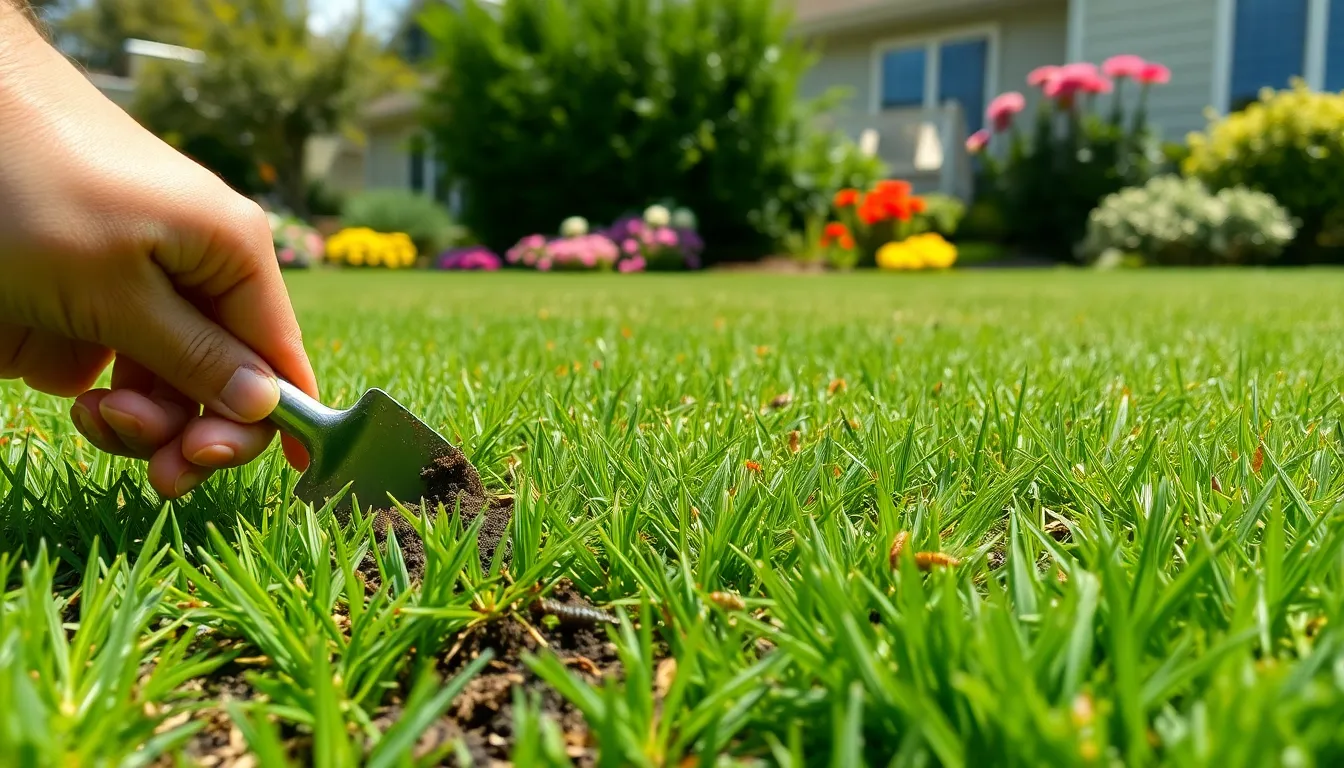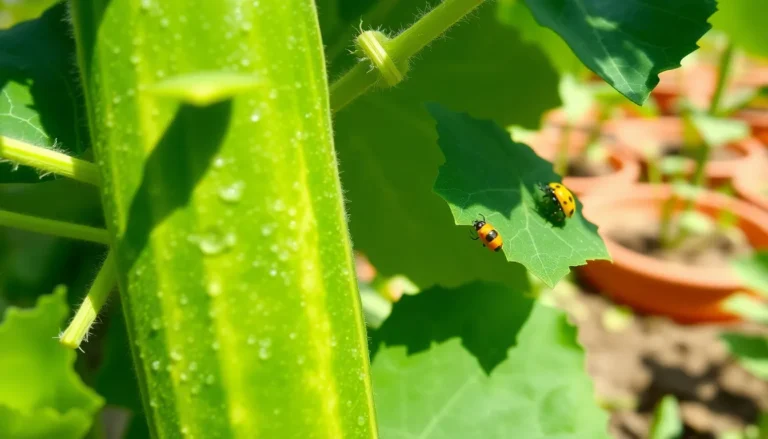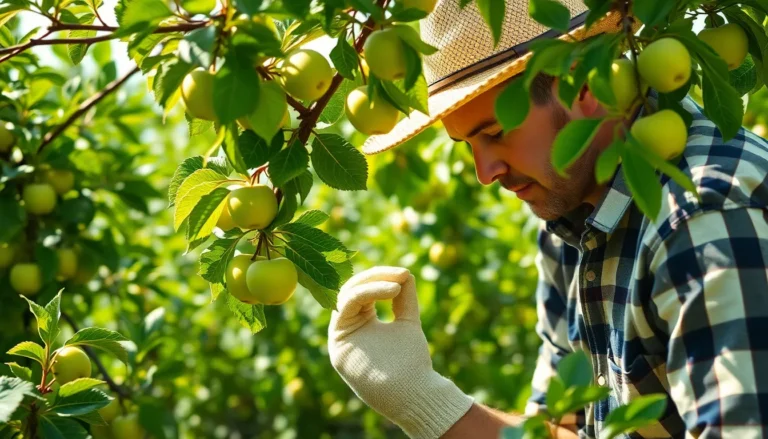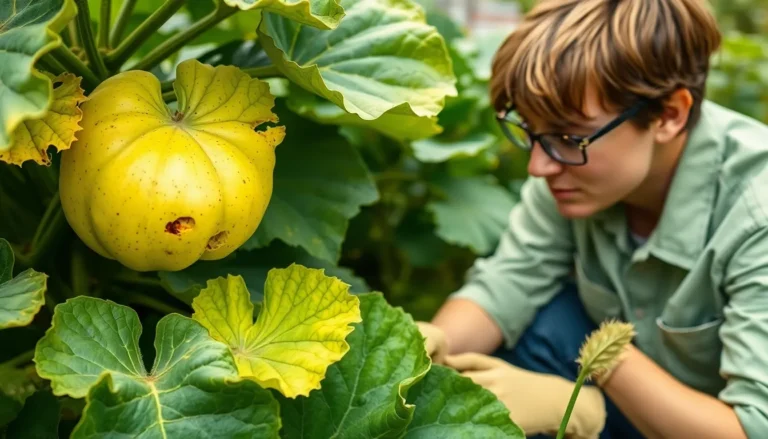
Lawn Pests: Discover Effective Strategies to Save Your Lawn from Destruction
A lush green lawn is the envy of the neighborhood, but lurking beneath that perfect facade are tiny invaders ready to wreak havoc. Lawn pests can turn any garden into a battlefield, leaving homeowners feeling like they’re in a horror movie where the grass fights back. From stealthy grubs to insatiable aphids, these uninvited guests are not just a nuisance; they can destroy all the hard work put into maintaining a beautiful yard.
Lawn Pests
Homeowners often encounter several common pests that threaten the health and appearance of lawns. Recognizing these pests early helps in managing and controlling their impact effectively.
Grubs
Grubs are the larval stage of beetles and typically feed on grassroots. Symptoms include wilting grass and patches of brown. They thrive in moist, warm conditions and can quickly multiply. Effective control methods involve applying beneficial nematodes or insecticides. Regular inspections of the lawn help identify grub infestations early, allowing for timely intervention.
Chinch Bugs
Chinch bugs are small pests that suck sap from grass blades. Signs of an infestation include yellowing or browning patches in the lawn. They often appear during hot, dry periods and can spread rapidly. Maintaining healthy soil and grass can minimize their impact. Insecticidal treatments can also be effective, especially when targeted early in the season.
Armyworms
Armyworms are larvae of moths and can cause significant damage to lawns in a short time. They feed on grass blades, often leaving visible damage. An armyworm outbreak can occur suddenly, typically in summer or early fall. Monitoring grass for signs of chewing can aid in early detection. Insecticides are a common control method, especially during active feeding periods.
Identifying Lawn Pests

Recognizing lawn pests promptly minimizes damage and preserves lawn health. Homeowners can focus on specific signs and damage patterns.
Signs of Infestation
Pest presence often reveals itself through visible signs. Look for discolored grass—yellow or brown patches signal possible chinch bug or grub activity. Additionally, sudden increase in insect activity, especially small insects on grass blades, indicates infestation. Detecting irregular patches or thinning areas suggests possible armyworm feeding. Pay attention to droppings or frass, which indicates caterpillar activity. Regular monitoring during growing seasons greatly aids in early identification.
Damage Patterns
Identifying specific damage patterns aids in pest recognition. Brown patches spreading across the lawn often indicate grub feeding, as roots become severed. Chinch bug damage appears as irregular, yellowing patches, typically intensified in dry, hot conditions. Armyworm damage often manifests suddenly, leaving chewed grass blades and bare spots. Inspecting these patterns enables accurate diagnosis and tailored treatment. Quick action prevents further lawn deterioration and promotes recovery. Regular observation of these damage signs helps maintain a healthy lawn environment.
Managing Lawn Pests
Effective management of lawn pests involves multiple strategies aimed at minimizing their impact. Homeowners can choose from chemical treatments or organic solutions based on their preferences and lawn conditions.
Chemical Treatments
Chemical treatments effectively target specific lawn pests. Insecticides like chlorantraniliprole directly combat grubs and larvae while keeping beneficial insects safe. Applying these products according to label instructions ensures optimal results and reduces unnecessary damage. Quick-acting sprays can address visible pest infestations, providing immediate relief for affected areas. Timing applications during peak pest life cycles enhances effectiveness, particularly against chinch bugs and armyworms.
Organic Solutions
Organic solutions prioritize eco-friendliness while effectively managing pests. Beneficial nematodes serve as natural predators of grubs, targeting larvae without harming the environment. Regular application of insecticidal soaps can deter aphids while maintaining lawn health. Furthermore, introducing companion plants that repel pests establishes a natural barrier in lawns. Practices such as maintaining healthy soil and proper watering attract beneficial organisms, naturally controlling pest populations. Adopting these organic methods fosters a balanced ecosystem and promotes long-term lawn vitality.
Preventing Lawn Pests
Preventing lawn pests requires proactive measures to maintain a healthy yard and deter infestations. Healthy grass withstands stress and resists pest damage.
Maintaining Lawn Health
Lawn health is essential in preventing pests. Well-nourished grass exhibits resilience against harmful insects. Fertilize regularly with balanced nutrients to encourage growth. Water deeply yet infrequently to promote deep root systems. Mowing at the right height enhances grass vigor, reducing vulnerability to pests. Aeration alleviates soil compaction, improving water infiltration and nutrient absorption. Disease-resistant grass varieties contribute to a strong lawn that naturally fends off pests.
Cultural Practices
Cultural practices strengthen lawns and minimize pest threats. Rotate mowing patterns to eliminate pest habitats and distribute wear evenly. Avoid over-watering, as excess moisture attracts pests like chinch bugs and grubs. Mulching grass clippings returns nutrients to the soil while suppressing weed growth. Planting diverse species fosters a balanced ecosystem, encouraging beneficial insects. Timing lawn care activities to coincide with pest life cycles enhances the effectiveness of preventive measures.
Conclusion
Lawn pests can wreak havoc on a homeowner’s hard work and dedication to maintaining a beautiful yard. Identifying and managing these pests promptly is essential for preserving lawn health and aesthetics. By employing effective strategies and preventive measures, homeowners can minimize damage and promote a thriving landscape.
Regular monitoring and timely interventions can make all the difference in combating these invaders. Whether opting for chemical treatments or organic solutions, each approach has its benefits. Ultimately, fostering a healthy lawn through proper care will create a resilient environment that can withstand pest pressures while maintaining its beauty.



